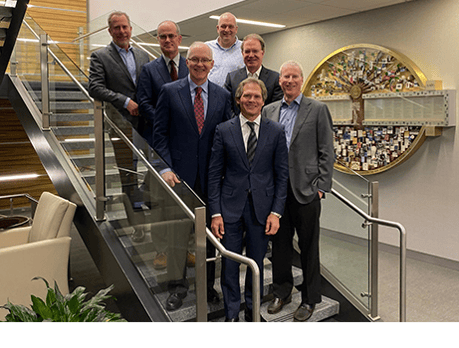
This article was originally published in the January 2020 issue of AAOS Now, the American Academy of Orthopaedic Surgeons (AAOS) monthly news magazine. The article has been updated to reflect current events.
The American Spine Registry (ASR), a partnership between the American Association of Neurological Surgeons (AANS) and the Academy, represents a collaboration to enhance and improve the quality of spine care by providing all US-based spine surgeons with access to a shared data-collection program.
The partnership leverages the data-science capabilities of AANS and its longstanding Quality Outcomes Database (QOD) with the operational expertise of the AAOS Registry Program.
“This is an appropriate, timely, and potentially paradigm-shifting partnership,” said Anthony Asher, MD, FAANS, FACS, neurosurgeon at Carolina Neurosurgery & Spine Associates and ASR cochair. “AANS and AAOS are highly regarded surgical specialty societies, both of which have clinical, scientific, and economic interests in spine-related therapies. It is significant that these two organizations ultimately chose to embrace the greater potential of what we could accomplish together. This combined Registry represents an enhanced opportunity to positively impact the future of spine care.”
“This is a great accomplishment for both specialties,” said Steven Glassman, MD, FAAOS, an orthopaedic surgeon at Norton Leatherman Spine Center and ASR cochair. “We are putting patient interests first and foremost through this collaboration. I commend everyone involved in this joint effort for the commitment needed to move the needle and advance spine care. This Registry has the potential to generate important improvements in quality of care and patient outcomes. It will provide data relevant to critical clinical and resource-related decisions.”
The shared vision for the ASR is to:
- Utilize data to inform AANS and AAOS care guidelines. The data can test both clinical performance benchmarks and the validity of various quality measures. Both efforts are critical to a value-based healthcare system.
- Provide feedback that allows surgeons to continuously improve their practice and healthcare outcomes using methods applicable to all practice settings.
- Reduce data-reporting burdens on physicians and allow reuse of data for regulatory requirements and continuous quality-improvement programs.
- Help inform gaps in knowledge and define areas for further education and research.
Dr. Glassman explained that since the announcement, the ASR staff has been perfecting the infrastructure necessary to transition QOD spine sites into the more robust ASR platform. ASR will include orthopaedic surgeons at existing QOD institutions, as well as extend this data-gathering functionality to both orthopaedic and neurosurgical centers throughout North America. Currently, QOD sites are largely unique from AAOS sites. The expansion will allow all current AAOS sites that provide surgical spine care to join the ASR. “These sites will be able to add the ASR to what they are already doing functionally with other AAOS registries,” Dr. Glassman said.
A Winning Pair
Drs. Glassman and Asher said that the collaborative approach to high-quality spine care that the ASR embodies and energizes is a “win-win” for surgeons and other stakeholders, including patients, payers, regulatory groups, and industry. The existing QOD sites will benefit from the decreased burden of data collection and entry, and AAOS sites will be joining a spine registry that is informed by QOD historical expertise.
Among the other advantages: Sites will benefit from data-reuse opportunities that increase the value of participating, and participation will be offered at two levels—standard (demographic and baseline data, automated data, and limited follow-up of patient-based outcomes) and vanguard (more extended detail and patient-reported outcomes [PROs])—across cervical and lumbar spine modules to start.
Dr. Glassman said that although enrollees will enjoy the benefits of a technologically refined platform that was developed for the AAOS registries, such as the American Joint Replacement Registry, the ASR platform also addresses the complexities and requirements particular to spine surgery.
“We’ve built additional infrastructure to accommodate elements that differ for spine as compared to total joint replacement,” Dr. Glassman said. “In particular, diagnosis and procedural detail in spine are frequently more difficult to capture accurately. For hip and knee replacement, the vast majority of cases involve osteoarthritis. For spine, there are many different diagnoses, and an important goal of the Registry will be to provide a more specific description of the condition or problem for which the patient is having a given procedure.” Refining diagnostic delineation in more detail than previous registries is key to providing optimal data, he said, “So we’ve been working on how that would be accomplished through smart forms within the electronic medical record. The procedures and implants are also more variable. For hip replacement, there are typically a small number of implant components. But for spine procedures, there are multiple implants over multiple levels. This will be the first spine registry to capture implant data in a comprehensive manner.”
The Importance of PROs
Measuring outcomes in spine surgery represents a significant challenge, and a key measure is functional outcome. Dr. Glassman noted that spine surgeons have regarded PROs as a standard expectation of data collection for many years. “The ASR will leverage multiple platforms to facilitate PRO collection, and we are working to make sure that PROs, which are central to how spine procedures are judged, can be collected effectively,” he said. “With the benefit of foundational data from the QOD, the ASR will have a tremendous head start because there is already the ability to do benchmarking and provide an understanding of baseline expectations for various procedures. We are adding a layer of data to that QOD experience, rather than starting from scratch.”
Overall, Dr. Glassman said, “Everyone agrees that to optimize quality, we want data that help us to understand what procedures work best in what patients. In the past, a major complaint has been that quality is judged only by cost and process measures. Even within that construct, the process measures are not usually chosen by surgeons, and are not necessarily reflective of the work we are doing. This is an opportunity to have data collected for surgeons, by surgeons, based on the elements that surgeons recognize as being reflective of real quality of care. If we are going to be judged by data, we want to be judged by data that truly reflect the quality of care that patients are receiving. The ASR provides a pathway to that goal.”
Sites or surgeons interested in joining the ASR as participants may contact the ASR team at Info@AmericanSpineRegistry.org.
Visit www.americanspineregistry.org to learn more.
Terry Stanton is the senior science writer for AAOS Now. He can be reached at tstanton@aaos.org.
Be sure to leave a comment in the form below!


